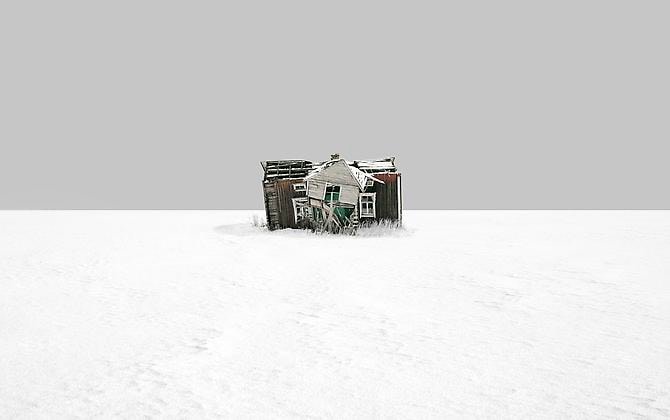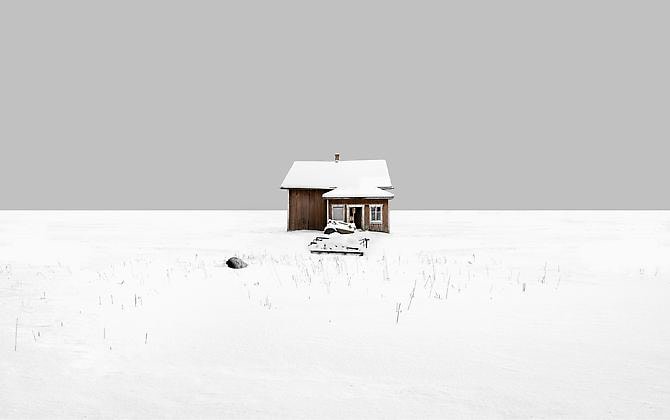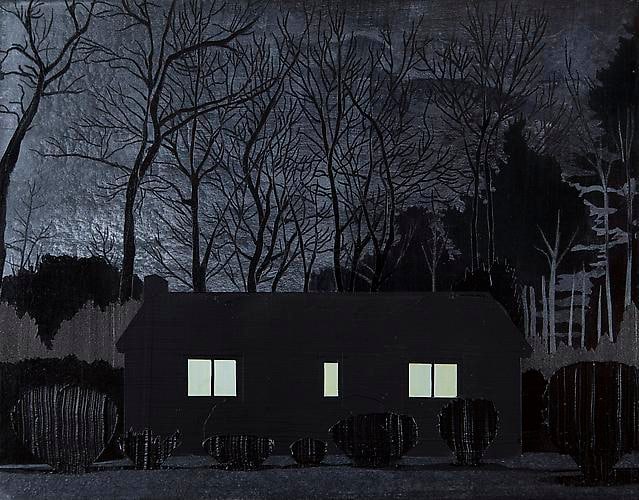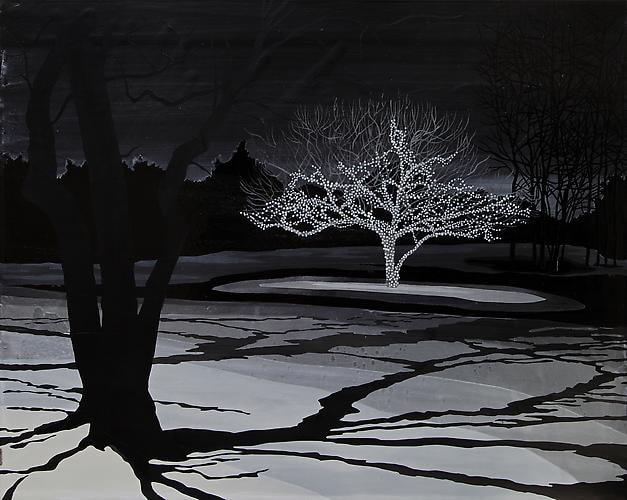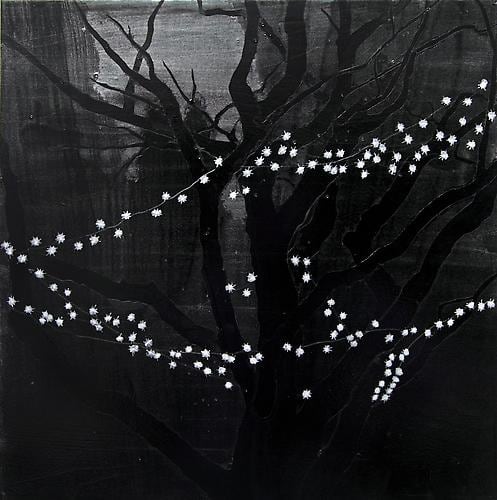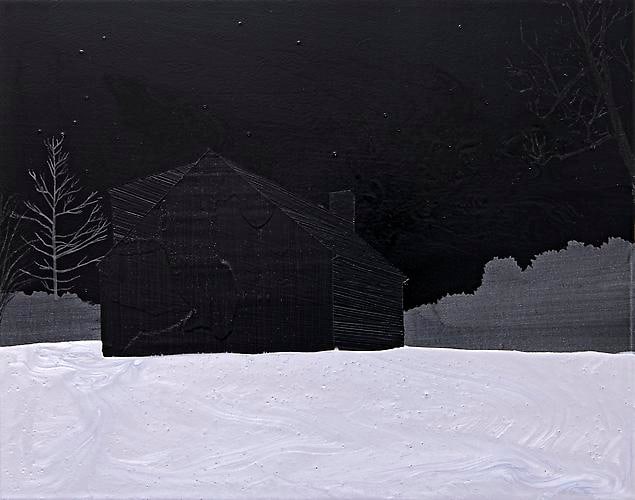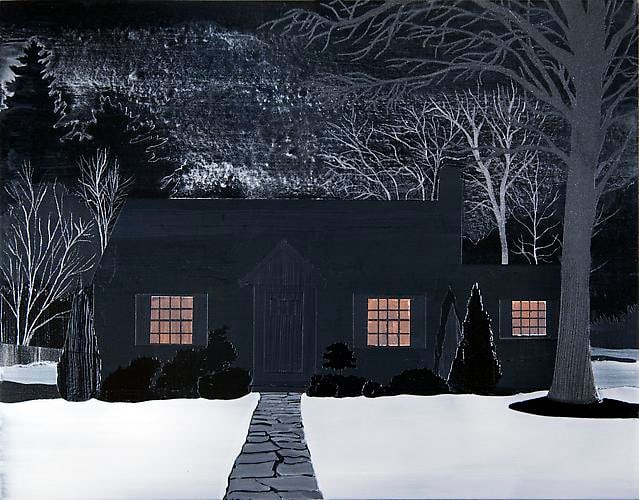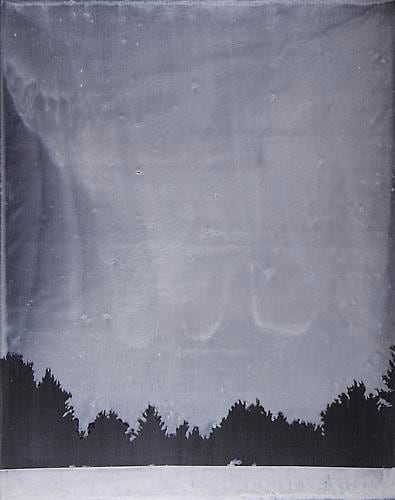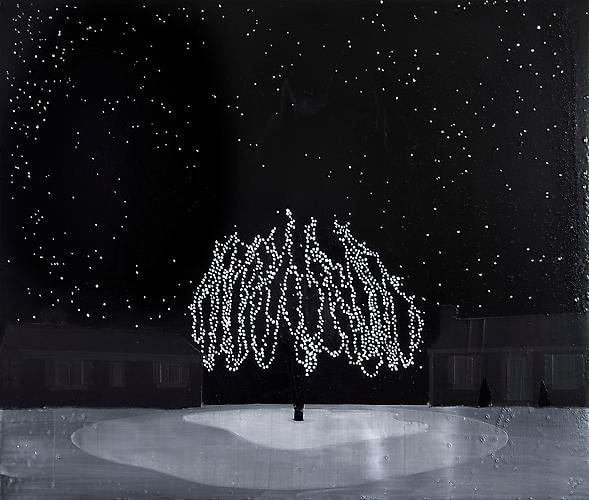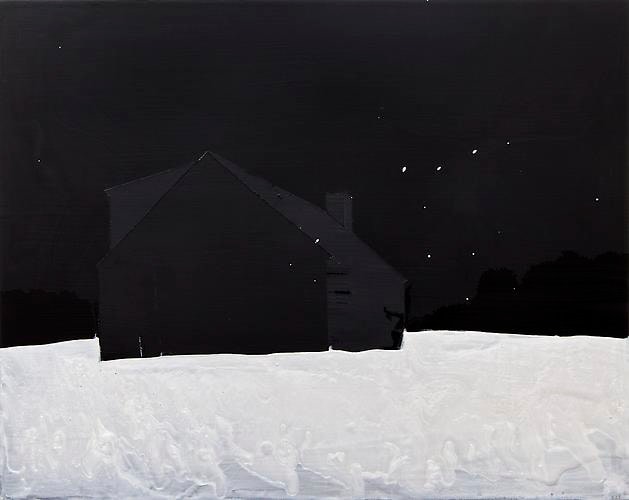Muriel Guépin Gallery is pleased to present “Illusory Landscapes," featuring photographs by Martina Lindqvist and paintings by Leigh Tarentino. Both artists depict conventional wintery landscapes yet trump the photorealistic nature of their renderings by imposing extreme inertia and solitude. The scenes are so unsettlingly still that they hover between reality and the imagined.
Martina Lindqvist photographs abandoned houses lost in the middle of frozen lakes; Leigh Tarentino paints snowy, suburban spaces. The vacancy, absence and inertia in these scenes are so extreme that they convey paralysis: it's as though time has been suspended.
Within extreme both artists explore the tensions that prevail between nature and human inhabitation. Whether suggested by the cold and deserted spaces or by the sinister snowy landscapes, hostility is an omnipresent characteristic of the areas presented in this exhibition. This remote areas’ feature dissuades humans from living there and this complete absence of life puts in doubt the impermeability of the border between reality and fiction.
Growing up in Finland, Martina Lindqvist photographs are inspired by her recollection on her childhood memories. Upon visiting the remote areas of her native country, she has always been struck by the omnipresence of nature and the vastness of uninhabited space. These areas have seen many previous inhabitants be drawn towards larger cities, thus leaving their old family homes to stand empty. By looking at failed attempts to settle, her images aim to explore the tension between nature and inhabitation. While occupying the nature used to symbolize the power of man, it seems that these areas now arouse fear and are avoided by humans. Martina Lindqvist attempts through theses images to capture that particular kind of spatial and temporal stasis specific to some remote areas. Rather than being a pure photographic portrayal of an actual space, these images show a perceived and manipulated space, and sit somewhere on the border between reality and fiction.
Leigh Tarentino’s paintings create imaginary landscapes that a viewer can inhabit. Indeed, being interested in utopias and dystopias for a long time, her paintings contains a bit of both. They depict familiar suburban spaces, but they carry a sinister and fairytale-like otherworldly quality. These are remote, dark, snowy winter nighttime scenes, lit only by artificial light or moonlight, with houses and gardens. This series is titled Memory of Snow to evoke the magical way that snow can transform a familiar environment, but beyond nostalgia, it might also imply a future where snow is only a memory.


